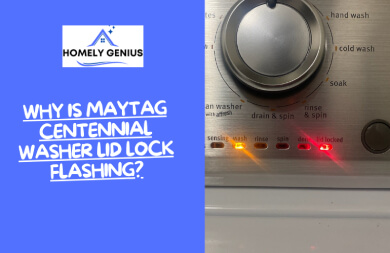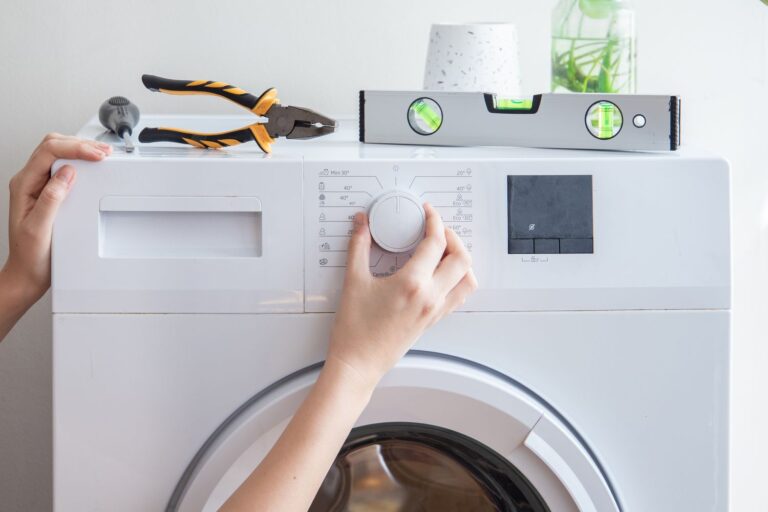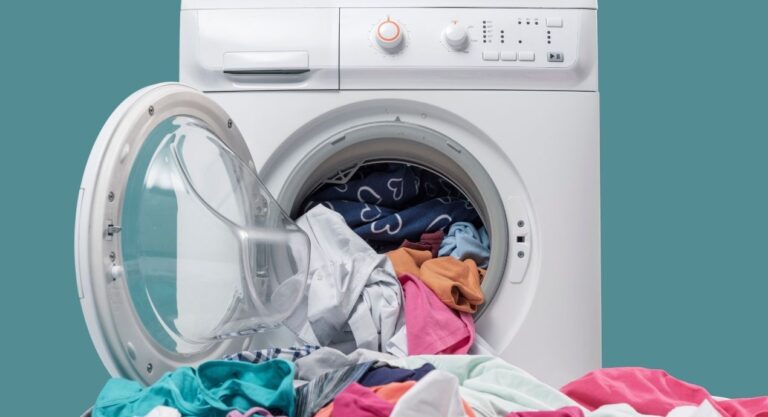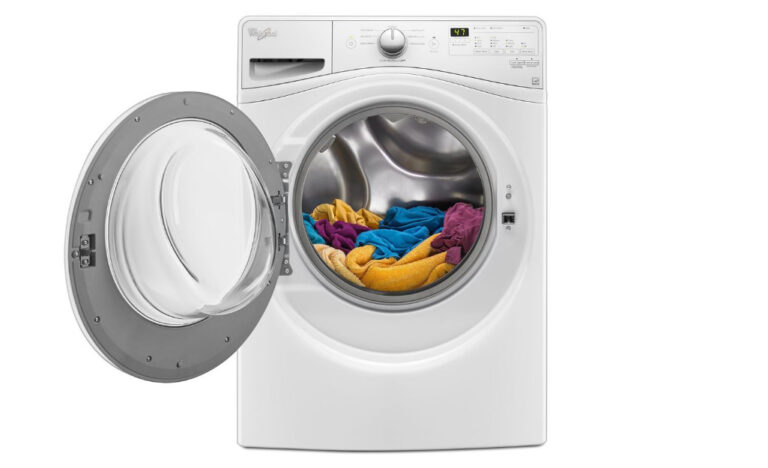Ge Top Load Washer Problems With Spinning: Troubleshooting Tips

A GE top load washer may face spinning issues due to unbalanced loads or a malfunctioning lid switch. Addressing these problems can restore proper functioning.
GE top load washers are reliable appliances, but spinning problems can arise, causing frustration. Common issues include unbalanced loads, which can cause the washer to shake and stop spinning. A faulty lid switch may also prevent the washer from spinning.
Regular maintenance and proper load distribution can help avoid these issues. Checking and replacing the lid switch if needed can also resolve the problem. Being aware of these potential issues can save time and ensure your washer operates efficiently. Proper troubleshooting steps can keep your GE top load washer in optimal condition.

Credit: m.youtube.com
Common Spinning Issues
Experiencing spinning problems with your GE top load washer can be frustrating. These issues can affect your laundry routine and even damage your clothes. Understanding common spinning issues can help you troubleshoot and fix the problem.
Slow Spinning
Slow spinning is a common problem that can leave clothes soaking wet. This issue might be caused by:
- Unbalanced load: Too many clothes on one side.
- Clogged drain: Water can’t leave the washer quickly.
- Worn belts: The belt might be slipping.
To fix slow spinning, try redistributing the clothes. Check the drain and clean it if needed. Replace worn belts if necessary.
No Spinning
If your washer isn’t spinning at all, it could be due to:
- Broken lid switch: The washer thinks the lid is open.
- Faulty motor: The motor isn’t working.
- Drive belt issues: The belt might be broken.
Inspect the lid switch and replace it if broken. Check the motor and drive belt for faults. Replace any faulty components.
Uneven Spinning
Uneven spinning can cause vibrations and loud noises. This issue might arise from:
- Unbalanced load: Clothes are not evenly distributed.
- Worn suspension rods: They can’t balance the drum.
- Faulty bearings: Bearings may need replacement.
Balance the load by redistributing clothes. Check and replace worn suspension rods. Inspect bearings and replace them if needed.

Credit: www.bestbuy.com
Diagnosing The Problem
When your GE top load washer has spinning problems, diagnosing the issue can save time and money. Understanding the symptoms and potential causes will help you fix the problem quickly.
Error Codes
GE washers often display error codes when something goes wrong. These codes can provide clues about the issue. Look for these codes on your washer’s display panel.
- Code E1: This indicates a water supply issue.
- Code E2: This signifies a drainage problem.
- Code E3: This points to a spinning malfunction.
Check your washer’s manual for a complete list of error codes. These codes guide you to the specific problem area.
Manual Inspection
Performing a manual inspection can reveal issues that error codes might miss. Start by checking the drum and agitator.
- Open the washer lid.
- Look inside the drum for any obstructions.
- Check if the drum spins freely.
If the drum or agitator doesn’t move smoothly, there could be a mechanical issue. Inspect the belts and pulleys for any wear or damage.
Listening For Sounds
Listening for unusual sounds can provide more clues. Common sounds include grinding, humming, or clicking.
- Grinding: This may indicate a problem with the motor or drum bearings.
- Humming: This often points to a blocked pump or faulty motor.
- Clicking: This can be due to a broken latch or switch.
Take note of any sounds during the spin cycle. These sounds can help you identify the problem.
Checking The Load
One common issue with GE top load washers is spinning problems. These issues often stem from the load inside the washer. Ensuring the load is correct can resolve many spinning problems. Below are some factors to check.
Overloading
Overloading your washer can cause spinning problems. The washer needs space to move the clothes. If the drum is too full, the washer may not spin properly.
- Check the user manual for load size recommendations.
- Remove some clothes if the drum is packed.
- Avoid stuffing the drum tightly.
Unbalanced Load
An unbalanced load can cause your washer to stop spinning. Clothes need to be evenly distributed.
- Open the lid and rearrange the clothes.
- Ensure heavy items are balanced with lighter items.
- Try running the spin cycle again.
Type Of Clothes
The type of clothes can affect the spinning. Some fabrics absorb more water and become heavy.
| Type of Clothes | Impact on Spinning |
|---|---|
| Towels and Jeans | Heavy when wet, may unbalance the load |
| Light Fabrics | Less impact on spinning |
Sort your clothes by fabric type. This helps maintain balance during the spin cycle.
Inspecting The Drum
Experiencing spinning issues with your GE top load washer can be frustrating. A common cause is problems with the drum. Inspecting the drum thoroughly can help identify and solve these problems.
Drum Alignment
The drum alignment must be perfect for smooth spinning. Check if the drum sits evenly. An uneven drum can cause shaking or noise. If the drum is off-balance, it may need adjustment. Use a level to ensure it’s properly aligned.
Obstructions
Foreign objects can obstruct the drum’s movement. Check for any items stuck in the drum. These could be small clothes, coins, or debris. Remove any obstructions carefully. A clear drum ensures efficient spinning.
Wear And Tear
Over time, parts of the drum can wear out. Inspect the drum for signs of wear and tear. Look for cracks, dents, or rust. Worn-out parts may need replacement. Regular maintenance can prevent major issues.
| Issue | Possible Solution |
|---|---|
| Off-balance Drum | Adjust alignment |
| Obstructions | Remove foreign objects |
| Wear and Tear | Inspect and replace parts |
Assessing The Motor
When your GE top load washer struggles to spin, the motor might be at fault. The motor powers the drum to spin. If it malfunctions, the washer cannot spin. Assessing the motor involves checking its functionality, overheating, and connections.
Motor Functionality
The motor’s main job is to rotate the drum. First, ensure the power reaches the motor. If the drum doesn’t spin, listen for any unusual sounds. A humming noise could indicate a problem. It might be a sign of a blocked motor. Use a multimeter to check the motor’s continuity. No continuity suggests a faulty motor. Replace the motor if necessary.
Overheating
Motors can overheat if overworked. Overheating can cause the washer to stop spinning. Check if the motor is hot to the touch. Allow it to cool down before restarting the washer. If the motor frequently overheats, it might need replacement. Overheating can also be a sign of other issues, like a worn belt.
Connections
Loose or damaged connections can cause motor issues. Inspect all wiring connected to the motor. Ensure all connections are secure and undamaged. Look for burnt or frayed wires. If you find damaged wires, replace them immediately. Use a wiring diagram to ensure correct connections. Proper connections help the motor run smoothly.
Evaluating The Belt
One common issue with GE top load washers is spinning problems. To fix this, evaluating the belt is key. The belt plays a crucial role in the washer’s spinning mechanism. Let’s dive into the different aspects of belt evaluation.
Belt Condition
Inspect the belt for any signs of wear and tear. A worn-out belt can hinder the washer’s performance. Look for cracks, frays, or any missing pieces. If the belt looks damaged, it needs replacement.
Tip: Regularly checking the belt condition can prevent future problems.
Belt Alignment
Proper belt alignment ensures efficient spinning. Misalignment can cause the belt to slip or break. Check if the belt is correctly placed on the pulleys. Ensure it runs smoothly without any twists.
Use a flashlight to get a clear view of the belt’s position. Correct any misalignment immediately.
Tension Adjustment
Tension adjustment is crucial for the belt’s function. A loose belt can cause spinning issues. Conversely, an overly tight belt can damage components.
Here’s how to adjust the tension:
- Locate the tension adjustment screw.
- Turn the screw to tighten or loosen the belt.
- Check the belt’s tension by pressing down in the middle.
- It should have a little give, but not too much.
Tip: Always refer to the washer’s manual for specific instructions.
| Inspection Point | Action Required |
|---|---|
| Wear and Tear | Replace if damaged |
| Alignment | Correct any misalignment |
| Tension | Adjust as needed |
By evaluating the belt, you can fix many spinning problems. Regular maintenance ensures your washer runs smoothly.
Examining The Lid Switch
One common issue with GE top load washers is spinning problems. The lid switch plays a crucial role in this. The switch ensures the washer spins only when the lid is closed. Let’s examine the lid switch to identify and solve the problem.
Switch Malfunction
A malfunctioning lid switch can stop the washer from spinning. The washer thinks the lid is open. Inspect the switch for visible damage or wear.
- Check for broken or loose wires.
- Look for dirt or debris blocking the switch.
- Ensure the switch clicks when pressed.
Replacement
If the switch is faulty, replace it. Here’s a simple guide:
- Unplug the washer from the power source.
- Locate the lid switch near the door frame.
- Disconnect the wiring harness from the switch.
- Remove the screws holding the switch in place.
- Install the new switch and secure it with screws.
- Reconnect the wiring harness.
- Plug the washer back in and test.
Testing
After replacing the switch, test the washer. Close the lid and start a spin cycle. The washer should spin normally. If not, recheck the installation.
Use a multimeter to test the switch’s continuity. No continuity indicates a faulty switch. Follow these steps:
- Set the multimeter to the continuity setting.
- Place the probes on the switch terminals.
- Press the switch. If the multimeter beeps, the switch works.
If the switch fails the test, replace it again.
Maintenance Tips
Regular maintenance is crucial for your GE Top Load Washer. It helps prevent spinning problems and prolongs the machine’s life. Below are some essential maintenance tips to keep your washer in top shape.
Regular Cleaning
Regular cleaning of your washer is vital. Dirt and detergent residue can cause spinning issues.
- Clean the drum: Wipe the drum with a damp cloth weekly.
- Run a cleaning cycle: Use a washer cleaner monthly.
- Check the detergent drawer: Clean it to avoid clogging.
Routine Inspections
Routine inspections can help you spot problems early.
| Inspection | Frequency |
|---|---|
| Check hoses | Every 3 months |
| Examine the lid switch | Monthly |
| Inspect the balance | Before each wash |
- Check hoses: Look for cracks or leaks.
- Examine the lid switch: Ensure it closes properly.
- Inspect the balance: Make sure the washer is level.
Professional Servicing
Some problems require professional attention. Don’t try to fix these yourself.
- Annual service: Schedule a professional check-up yearly.
- Motor issues: Call a technician for motor problems.
- Complex repairs: Leave electrical and mechanical repairs to experts.
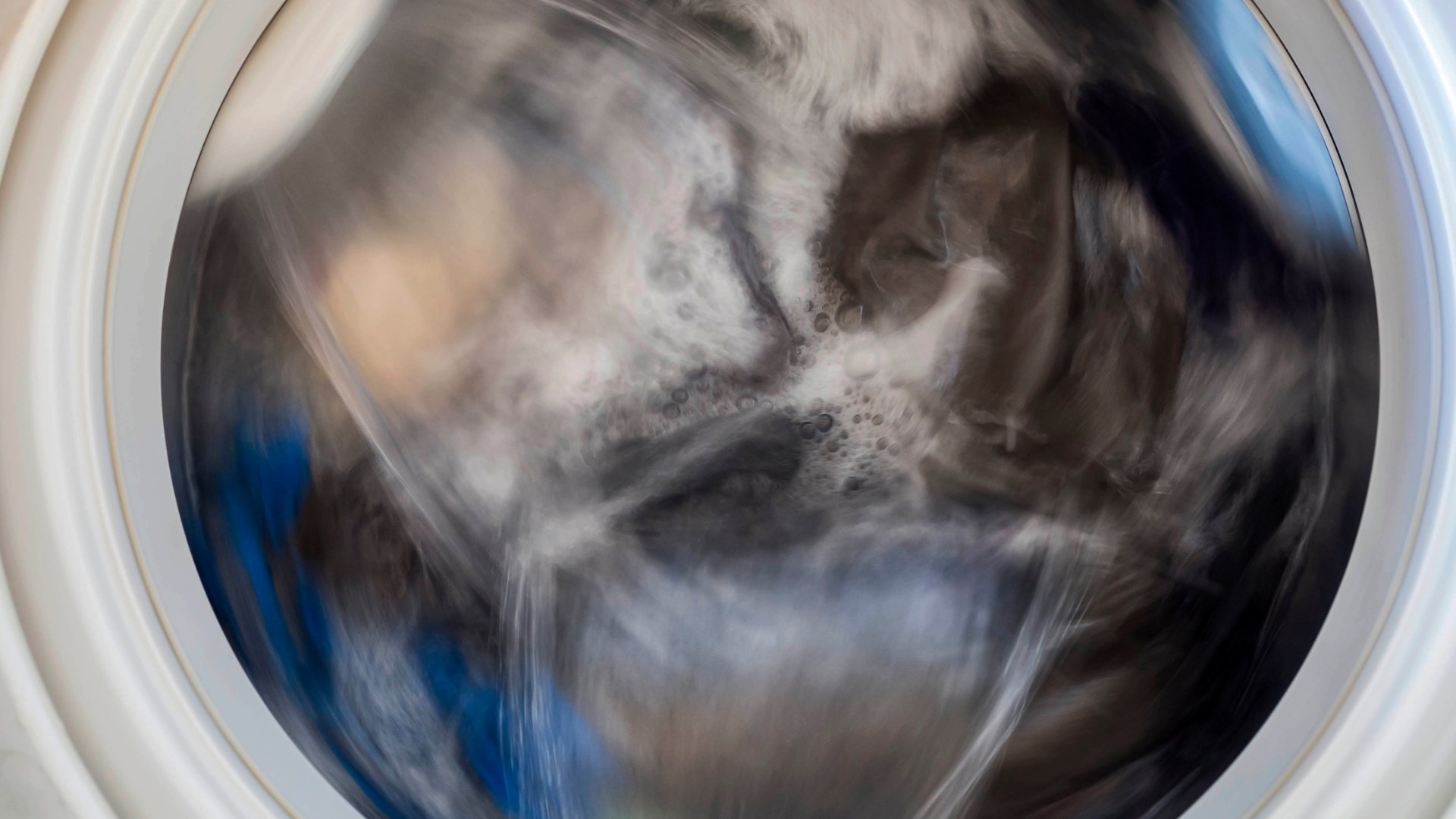
Credit: fleetappliance.com
Frequently Asked Questions
What Would Cause A Ge Washer To Not Spin?
A GE washer might not spin due to a broken drive belt, faulty lid switch, motor issues, or unbalanced load.
How Do You Reset The Spin Cycle On A Ge Washer?
To reset the spin cycle on a GE washer, unplug the machine for 1 minute. Plug it back in and select the spin cycle. Press “Start” to resume.
Why Is My Ge Top Load Washer Banging During The Spin Cycle?
Your GE top load washer may bang during the spin cycle due to unbalanced loads, worn drum bearings, or loose parts. Check and redistribute clothes, inspect bearings, and tighten any loose components.
Why Is My Top Load Washer Shaking Violently On The Spin Cycle?
Your top load washer may shake violently due to unbalanced loads, uneven flooring, or worn suspension rods. Ensure clothes are evenly distributed and check the machine’s leveling. Replace worn parts if needed.
Why Is My Ge Washer Not Spinning?
The washer might be overloaded or unbalanced. Ensure clothes are evenly distributed and try again.
How To Fix A Ge Washer Spin Issue?
Check for blockages, balance the load, and inspect the drive belt for damage.
What Causes Ge Washer Spin Cycle Failure?
Common causes include unbalanced loads, faulty lid switch, or a worn drive belt.
Can A Clogged Drain Cause Spin Problems?
Yes, a clogged drain can prevent proper spinning. Clear any blockages to resolve the issue.
Conclusion
Addressing GE top load washer spinning issues can save you time and frustration. Regular maintenance is key to prevention. Always consult your washer’s manual for troubleshooting tips. Don’t hesitate to contact professional help if problems persist. A well-functioning washer ensures your laundry routine remains smooth and efficient.
Keep your appliance in top shape for best results.

